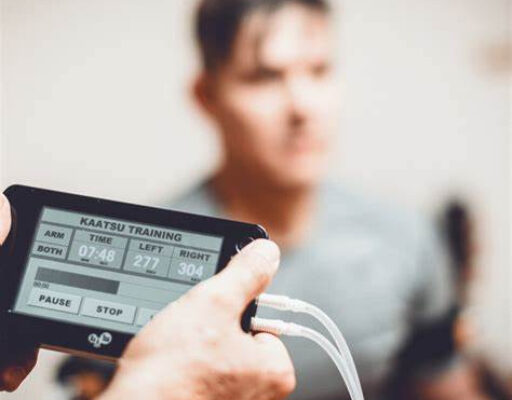Earlier this year, I had long-awaited knee surgery, only to be followed up by surgery on my other knee just a few weeks ago. It wasn’t in small part due to my former career, although I’d be remiss if I didn’t also mention that I’m a very active person; with the latter exacerbating my injuries from the former. After surgery I was left with over 6 weeks in a brace my first time around, and it was during physical therapy that I started researching ways I could aid muscular healing and recovery on my own. Given the title of this article isn’t “The Wonders of Endocrine Science” it’s safe to assume this is going to be a topic in the physiotherapy school, and what I found is low-load occlusion training. For the purposes of this article, we’re going to use the more colloquial term BFR (Blood Flow Restriction) training in the interest of brevity.
The science behind BFR training dates to 1960s Japan. Very much though trial and error, Dr. Yoshiaki Sato developed KAATSU, a training modality utilizing occlusion cuffs placed on the limbs of the person being treated and then engaging in resistance training. It’s come a long way from its origins and with time and research we now know much more about how it works. At inception, however, the results were discovered by chance. Sato, a lifter himself, ended up attempting to treat muscle cramps by binding the limb with tire tubing and exercising with little to no weight. Noting that it felt like the result of a much heavier workout, he began experimenting with different occlusion materials and training programs. It was through his research and standardizations that KAATSU was created. From Japan, it made its way to the U.S. in the early 2000s. It’s now widely used in physiotherapy recovery fields and in professional training regimens.
Believe it or not, the mechanics are very simple. You essentially tighten a strap around your upper arm or leg, tight enough to occlude (block) venous blood flow leaving without stopping the arterial flow that your limb requires to function and survive. A focus on the word limbs, and it functions best when tightened at the highest part of the limb. Without medical equipment ranging in price from $1-5k, the rest of us are forced to look elsewhere with conventional BFR bands. These can be found commercially in sports stores and online retailers. With those devices, you’re guided by the 70% rule. With 100% being a literal tourniquet, you back it off from there. Without a computer to control a pneumatic KAATSU cuff, the tightness on BRF bands is subjective.
Something important to keep in mind is that passing that 70% doesn’t improve the effect gained. So, numbness and tingling are indicators that the straps are too tight. The weight used is also significantly lighter than used in conventional training. It’s the science behind cellular respiration that drives results with BFR training, so the individual should use 20-30% of their training max, in the 12-15 rep count range. They’d also give themselves very limited (30 seconds) rest between sets. To simplify things, the lactic acid buildup/anaerobic environment you’re causing is activating your type-II muscle fibers; the muscle fibers that are engaged in high intensity exercise. BFR training utilizes lower weight and puts significantly less stress on joints and connective tissue. In my next article, I’ll be covering the deeper mechanisms behind BFR training, and how simple cellular respiration is at the center of it.
“Do you not know that your body is a temple of the Holy Spirit within you, which you have from God? You are not your own; you were bought with a price. So glorify God in your body.”
1Cor 6:19-20
Deo Vindice
-By Andrew Tiefland

O I’m a good old rebel, now that’s just what I am. For this “fair land of freedom” I do not care at all. I’m glad I fit against it, I only wish we’d won, And I don’t want no pardon for anything I done.






Very interesting. I wonder if this therapy will help with nerve damage resulting in uncontrollable shaking. I’ve got a friend using alternative therapy to help with this problem. I’ll pass this article on.